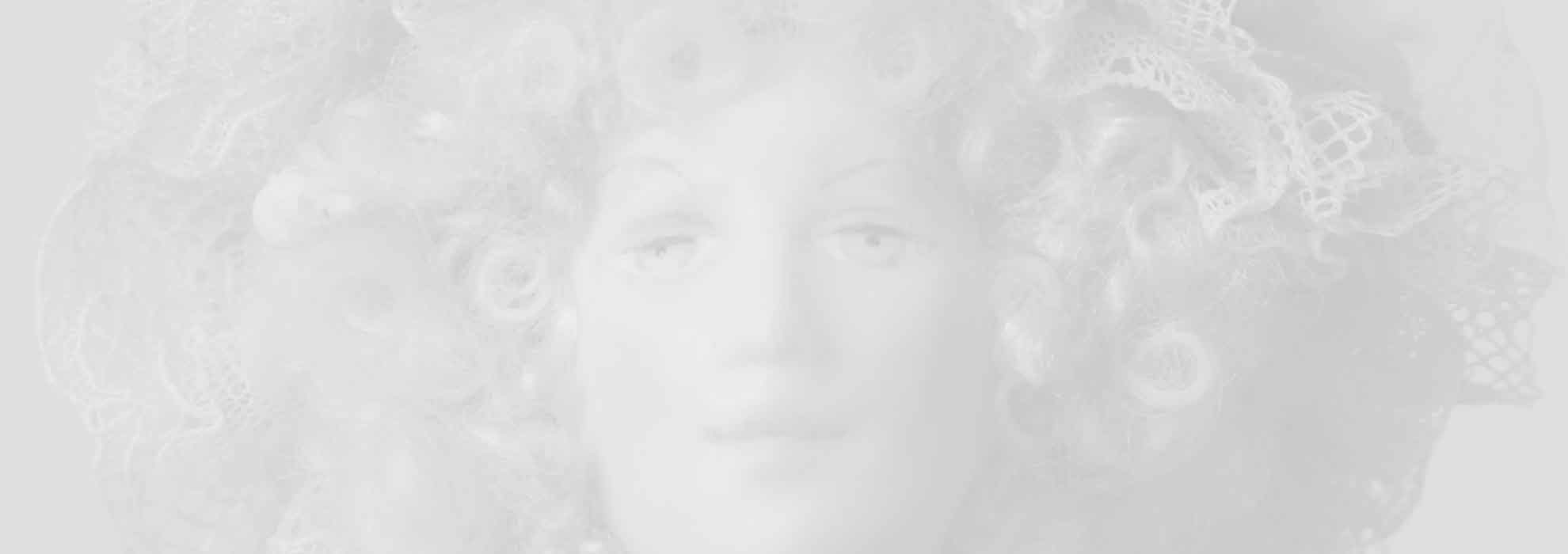The 18th Century Monarchs
Anne - 1702 to 1714
George I - 1714 to 1727
George II - 1727 to 1760
George III - 1760 to 1820
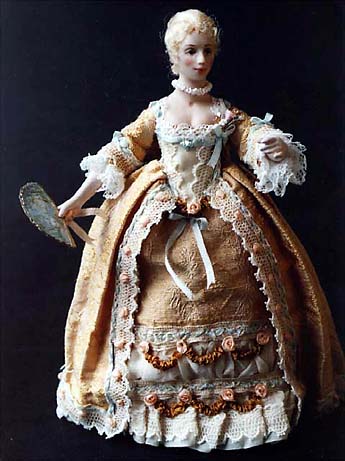
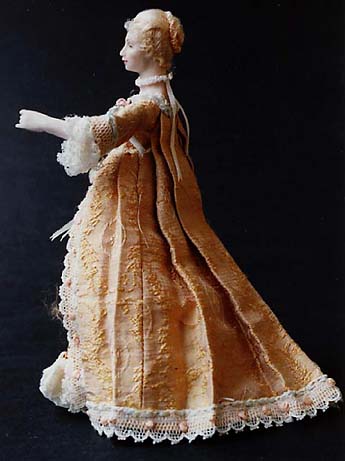
Above a lady in a ball gown with 'sack back'.
Circa 1740's
The 'sack back' remained popular in various forms from the death of Louis XIV of France. The courtly styles had become very stiff and uncomfortable so the looser, more flowing lines of the gowns brought some relief. What happened in France was also the rage in England. Soon, however, side hoops were introduced to give the figure a wider look.
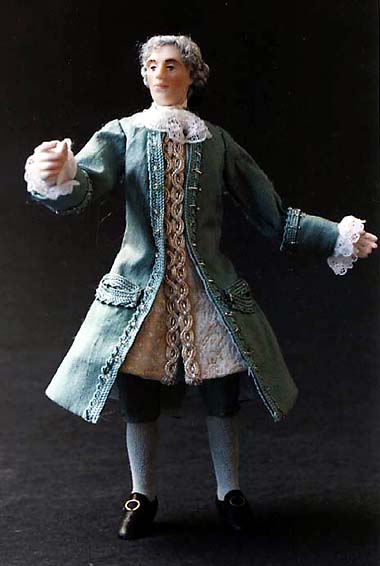
Above, a Gentleman circa 1740's.
Below, a lady's maid from the front and back.
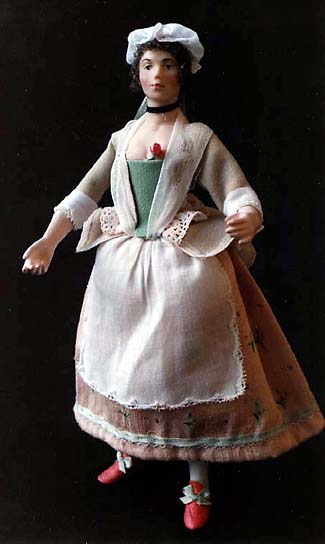
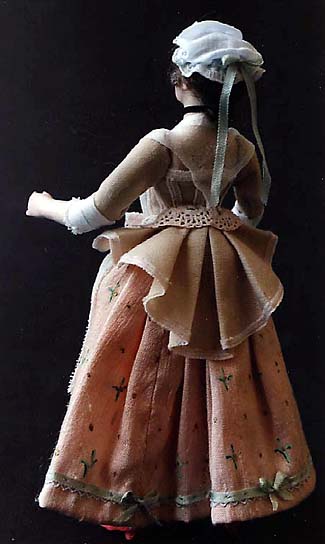
Ladies close hairstyles giving a 'small' head are beginning to grow longer.
Men continued to glow with gold braid and feathered hats on top of longer and even longer wigs.
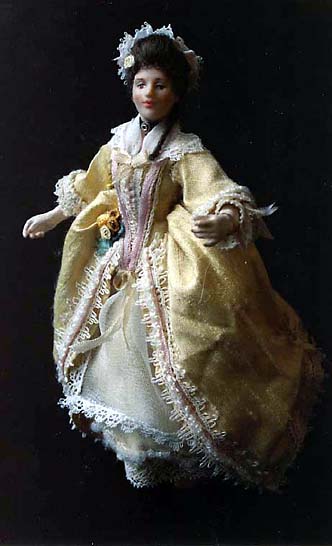
Above, a lady of fashion circa 1760's.
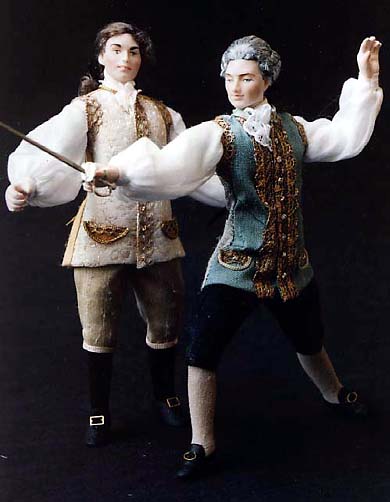
Below, a Hussar with his impressive tricorn hat
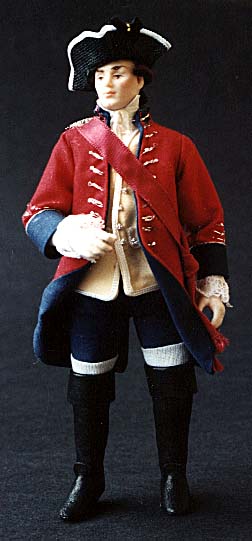

Above, Gentleman in an embroidered coat.
Circa 1740's
By the 1770's the hair, which had been powdered from early in the century and continued so until the French Revolution, when in France it was to rise alarmingly (see 4 examples below). Further adorned with caps, hats and feathers, at a ball in Versailles the ladies' heads were so tall that the feathers caught fire from the chandeliers.
By contrast the English Court of George III was quite conservative and slightly stuffy.
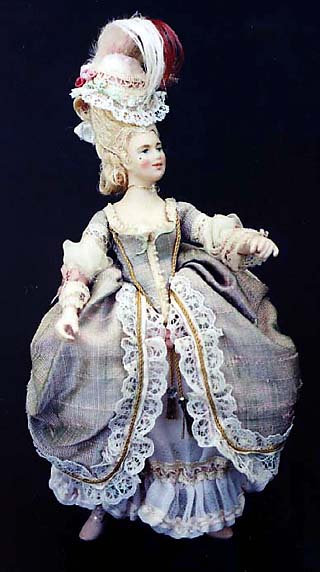
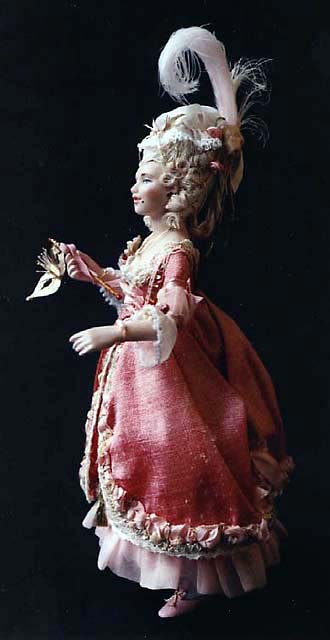
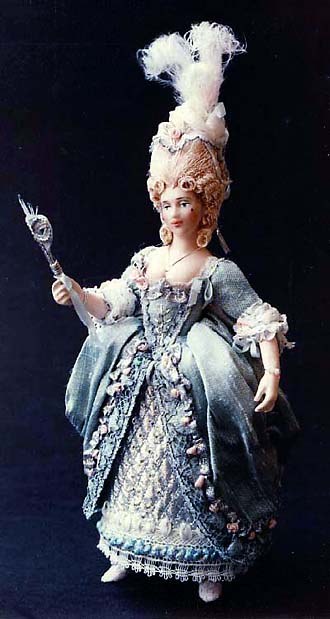
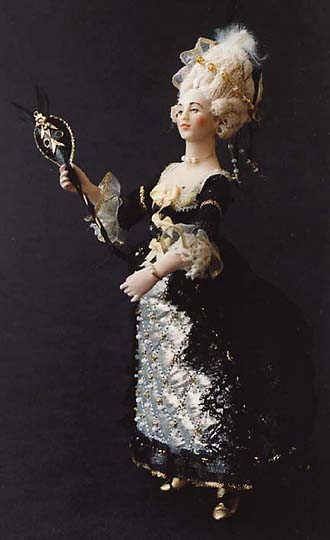
Stockings were gartered and ladies did not wear anything under their petticoats.
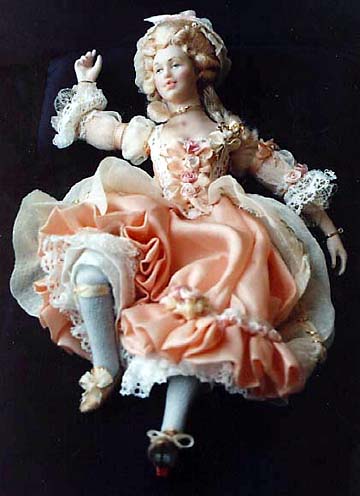
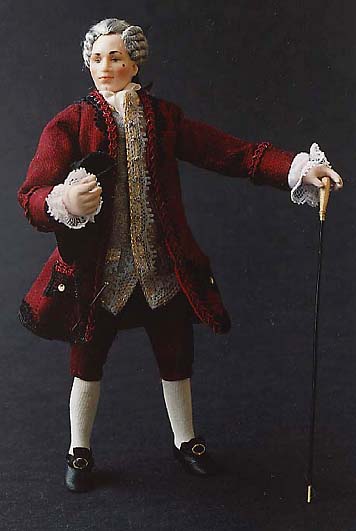
During the 1780's hair generally collapsed and was worn wide at the sides. Skirts lost some of their width unless at a formal occaision, and some French Aristocracy aped 'simple' shepherdesses and the like.
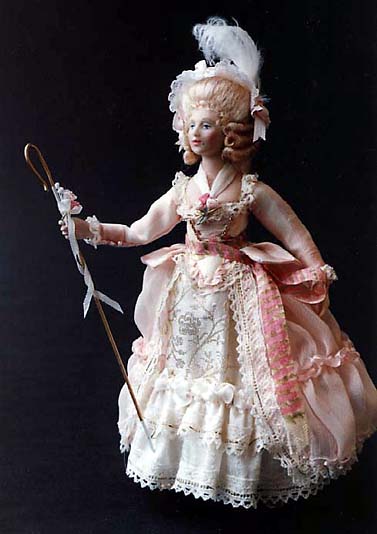
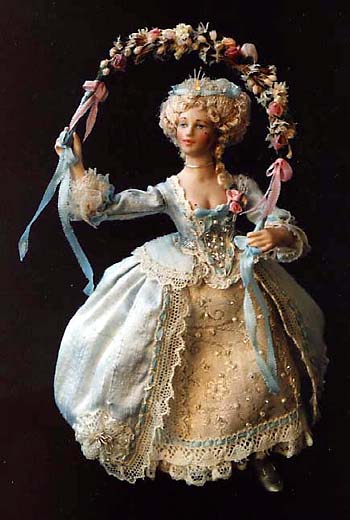
By this time waists had risen a little and although the hair was still 'large' voluminous hats covered it, and it was draped with oriental silks twisted into turbans etc. Below, an aristocratic couple, circia 1780-90s.
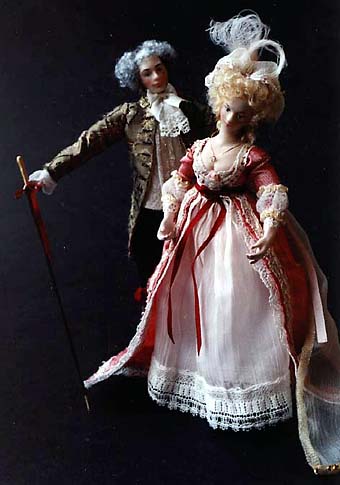
A housemaid should be active, clean, and neat in her person. Be an early riser, of a respectful and steady deportment, and possessed of a temper that will not be easily ruffled. She must be able to see without much appearance of discomposure her labours often increased by the carelessness and thoughtlessness of others.
Below, A housekeeper, a nurse with the baby and a rather tipsy butler.
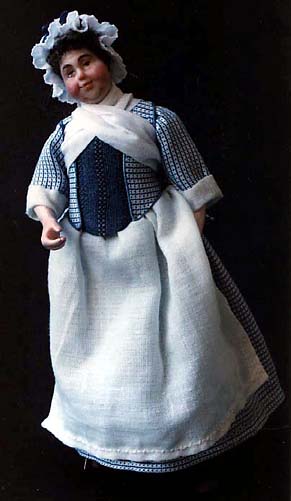
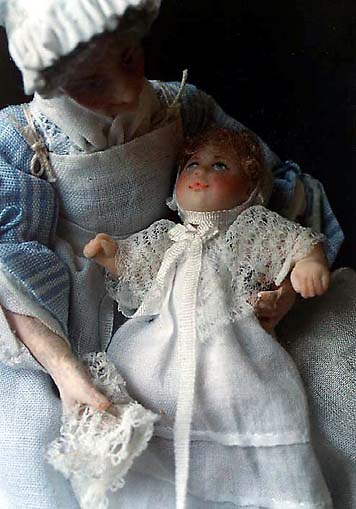
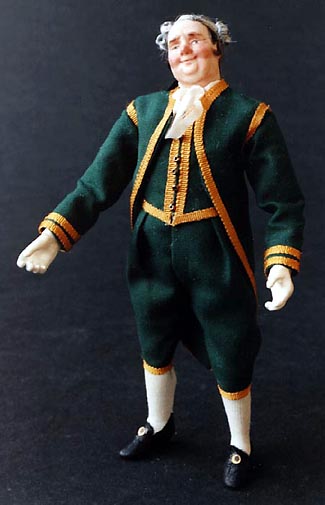
The scullery maid or scullion was lowest of all the servants and typically very young, these girls (and sometimes boys) performed the dirty work. She scoured the pots and pans; cleaned vegetables, scrubbed scales off fish, and plucked poultry; blackened the stoves and lit the cooking fires; cleaned away garbage and debris on the kitchen area floors; kept the pantries and larders clean and organized.
Below, The scullion and the cook.
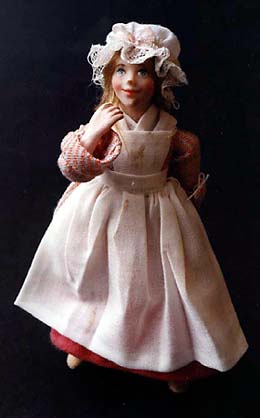
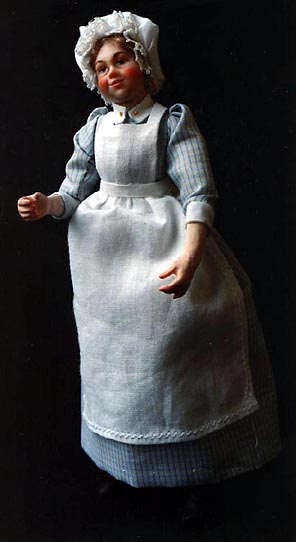
Georgian street traders brought colour, variety and vibrancy to the streets of London, and many became famous characters, instantly recognisable by their distinctive cries.
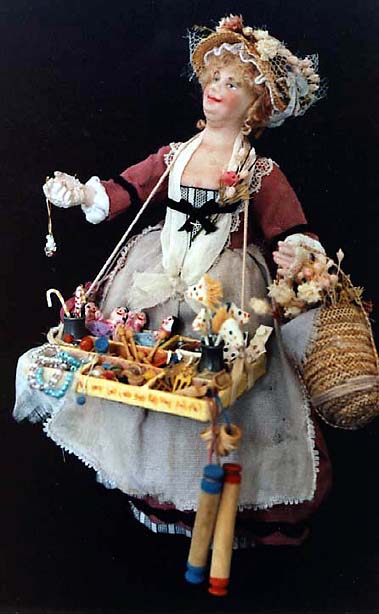
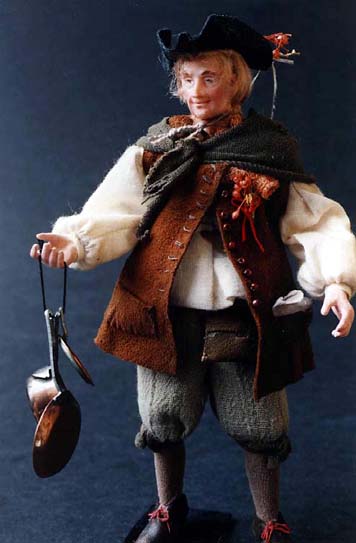
Dolls by: Jill Bennett (1934 - 2019)
